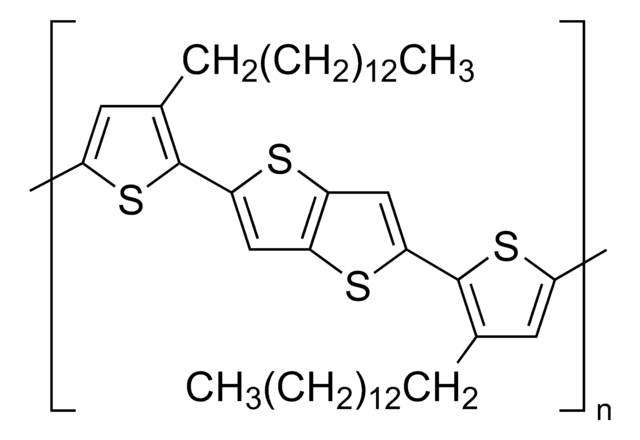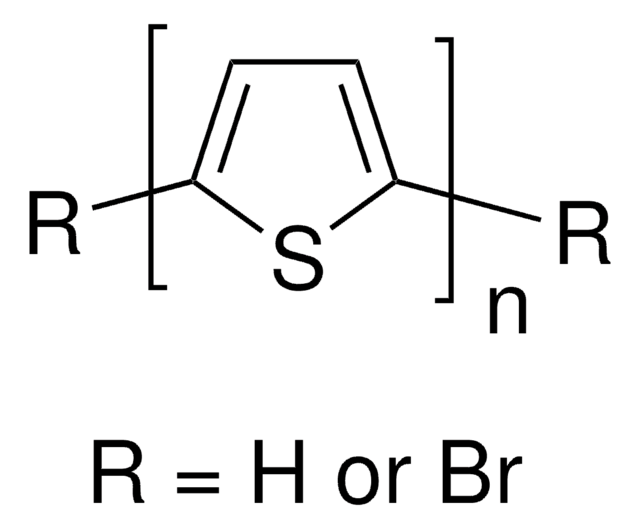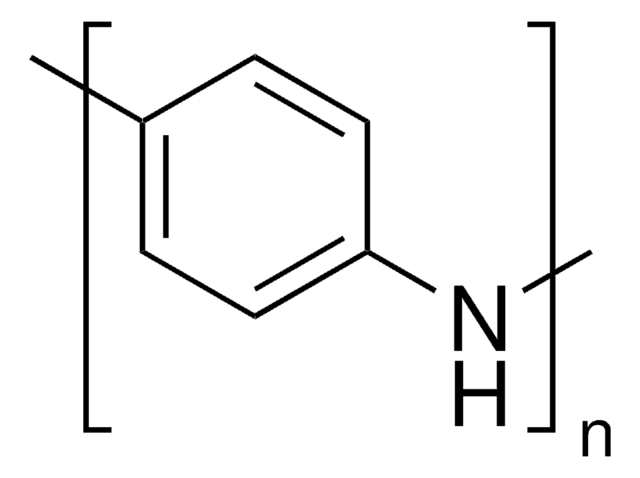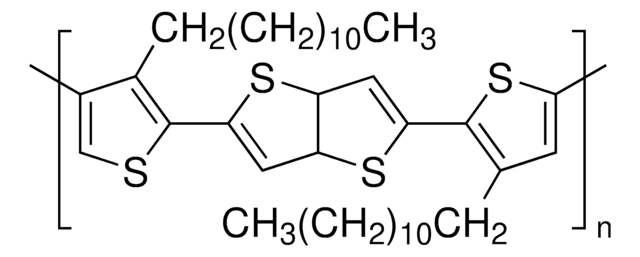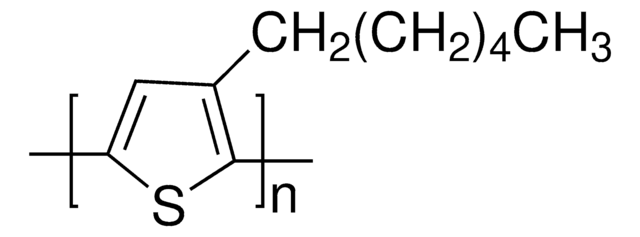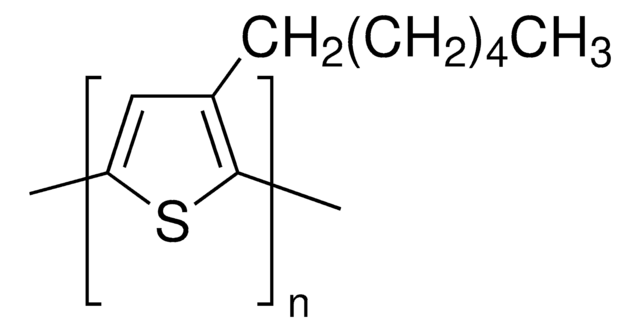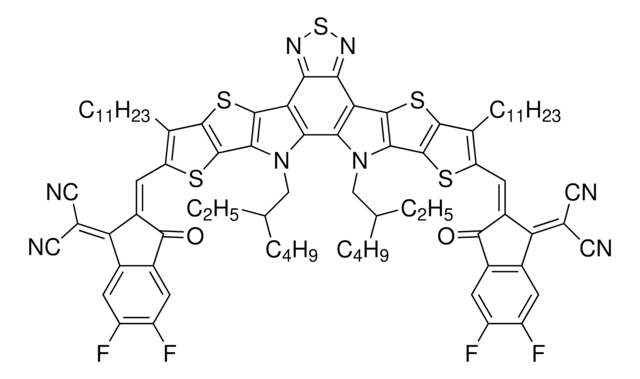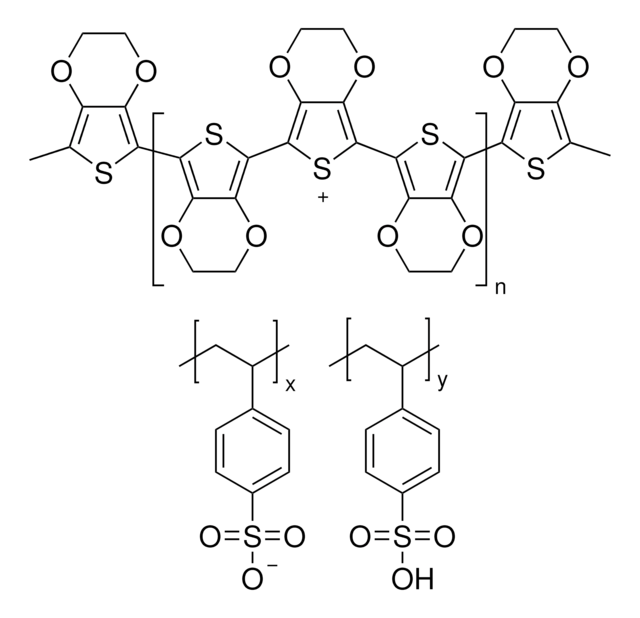Kluczowe dokumenty
906921
PQT-12
Synonim(y):
Poly(3,3′′′-didodecyl[2,2′:5′,2′′:5′′,2′′′-quaterthiophene]-5,5′′′-diyl), Poly(4,4′′-didodecyl[2,2′:5′,2′′:5′′,2′′′-quaterthiophene]-5,5′′′-diyl)
About This Item
Polecane produkty
opis
Band gap: 2.27 eV
Eox = 0.45 V
Solution processable (chloroform, chlorobenzene, etc)
LIFT transferable
Formularz
solid
masa cząsteczkowa
Mw 10,000-25,000 by GPC
kolor
brown
rozpuszczalność
>5 mg/mL (in CHCl3)
λmaks.
473 nm in toluene
Energia orbitalna
HOMO -5.24 eV
LUMO -2.97 eV
temp. przechowywania
15-25°C
Powiązane kategorie
Zastosowanie
Kod klasy składowania
11 - Combustible Solids
Klasa zagrożenia wodnego (WGK)
WGK 3
Temperatura zapłonu (°F)
Not applicable
Temperatura zapłonu (°C)
Not applicable
Wybierz jedną z najnowszych wersji:
Certyfikaty analizy (CoA)
Nie widzisz odpowiedniej wersji?
Jeśli potrzebujesz konkretnej wersji, możesz wyszukać konkretny certyfikat według numeru partii lub serii.
Masz już ten produkt?
Dokumenty związane z niedawno zakupionymi produktami zostały zamieszczone w Bibliotece dokumentów.
Produkty
Professor Tokito and Professor Takeda share their new materials, device architecture design principles, and performance optimization protocols for printed and solution-processed, low-cost, highly flexible, organic electronic devices.
Professor Chen (Nankai University, China) and his team explain the strategies behind their recent record-breaking organic solar cells, reaching a power conversion efficiency of 17.3%.
Nasz zespół naukowców ma doświadczenie we wszystkich obszarach badań, w tym w naukach przyrodniczych, materiałoznawstwie, syntezie chemicznej, chromatografii, analityce i wielu innych dziedzinach.
Skontaktuj się z zespołem ds. pomocy technicznej